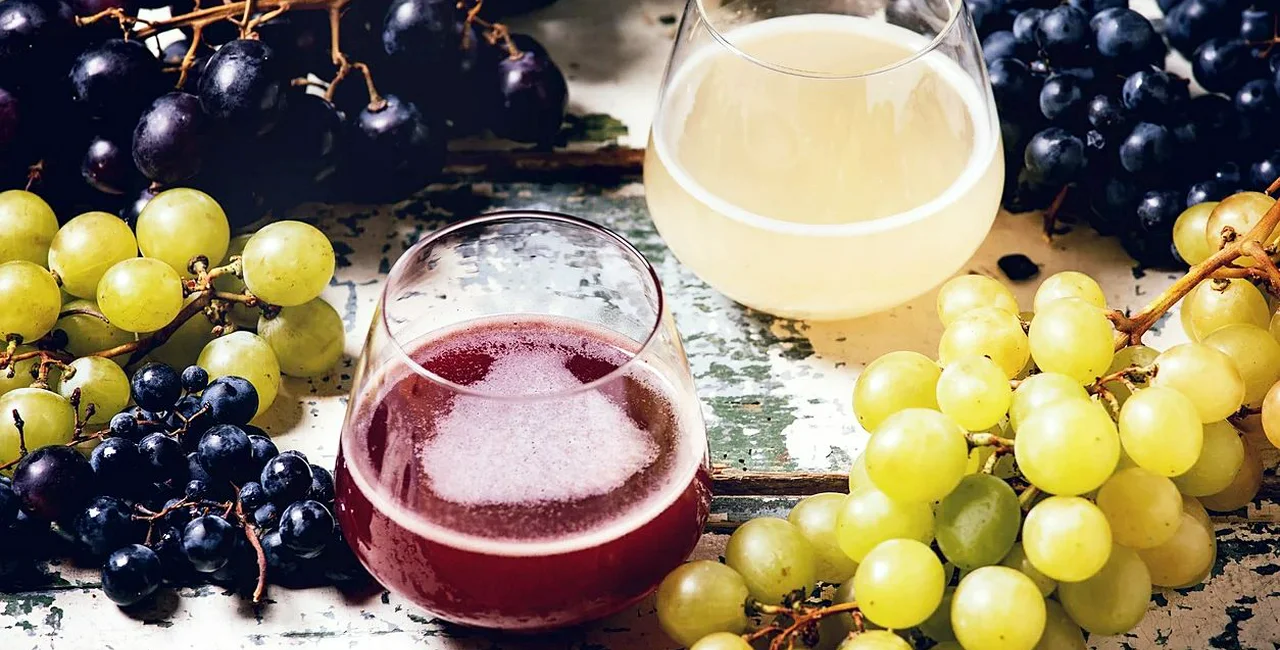Wine harvest (vinobraní) has slowly started in Czech Republic, and signs advertising burčák, the partially-fermented Moravian wine, have started popping up South Moravia.
Burčák is widely available from late August to early November for a fleeting season. The beverage cannot legally be sold before August 1.
A dry summer has pushed up the harvest, and some vendors have started selling the young wine in parts of Břeclav in South Moravia.
“Year after year it’s different and the year before it just came out, everything was so wild, everything matured earlier,” one manufacturer told iDnes.
The young wine is made by partly fermenting the first pressing of grapes, which results in a cloudy beverage with about 4–6% alcohol. The name burčák only refers to the young wine made from local, Czech grapes.
In Prague, Burčák can be found at various wine bars, farmers markets and local wine festivals when in season.
But the freshest burčák is normally found in Moravia, where they have festivals that celebrate the wine harvest. The first signs of burčák have started to pop up around Moravia this week, signaling the start of the season.
Miloslav Machuča from Valtice grows grapes almost exclusively for the production of burčák. He told Lidovky.cz that this year’s variety is now ready, and will feature Irsai Oliver grapes, followed by Moravian Muscat and Veltlin in the autumn.
“These days, the first collections of early varieties, such as Solaris, Irsai or Moravian Muscat, are beginning, and larger areas will be harvested next week. According to my information, for example, Solaris has a sugar content of up to 18 degrees, the grapes are nicely ripe and aromatic,” said Tibor Nyitray, a representative from the Winegrowers’ Association.
Due to construction, his normal stalls have moved to a detour near Dolní Dunajovice. The other stall is near Lednice and Valtice.
If you plan to pick up some of the sweet wine, here’s our guide to picking out the best burčák.
The drink is known for, among other things, producing a terrible hangover. While folklore says this is because it continues to ferment in the drinker’s stomach, that is not true as the acid content of the stomach would kill the yeast. The hangover is due to the high volume chemicals related to incomplete alcohol production. Also, since it tastes like grape juice, people tend to drink a lot of it without realizing. This has led to excessive behavior among its drinkers.
Experts caution that burčák should still have active carbon bubbles visible and even audible, as the yeast should still be live. Burčák from white wine should be golden yellow in color, and not brownish.
It should also be stored in a chilled environment, and not out in the sun as heat speeds the fermentation too much.
It is seldom sold in stores since it requires special handling. If you buy some to take home in a plastic bottle, you should remember to loosen the cap every few hours to let the gas from fermentation escape.
Under Czech law, aside from the August 1 release date, there are some other rules. It must be made only from grapes harvested and processed in the Czech Republic during the current calendar year. It cannot be diluted or have added colors to mask poor quality. It cannot be sold after November 1.
Information on the location of origin and producer has to be posted by the vendor. It must have at least 1 percent alcohol under the law, otherwise, it is simply grape juice.
Foreign products can be sold, but must be called something else, such as partially fermented grape must (částečně zkvašený hroznový mošt). It is known as burčiak in Slovkia, and Federweisser, Suser, Sauser, Neuer Süßer, Sturm or Junger Wein across German-speaking regions. It can also be found in France, Hungary, Albania, Romania and Georgia, among other countries with a wine tradition.
Raymond Johnson contributed to this article.












 Reading time: 3 minutes
Reading time: 3 minutes 
























